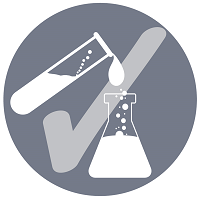Formulation and Delivery
Symposium: Enabling Technologies and Materials for Formulation Innovation 2
Lipids Evaluation in RNA-LNPs: Enhancing Endosomal Escape and Extrahepatic Delivery
Tuesday, November 11, 2025
9:00 AM - 9:30 AM CT
Location: Stars at Night B2/B3

Aishwarya Saraswat, Ph.D.
Senior Scientist
Regeneron Pharmaceuticals
Tarrytown, New York
Speaker(s)
Nucleic acid delivery via lipid nanoparticles (LNPs) has significantly emerged with recent breakthroughs in the clinic for both siRNA and mRNA therapeutics. Lipid composition and the type of chemistry involved play an important role when designing LNPs to achieve successful RNA delivery following endosomal escape – a major bottleneck for nucleic acid therapeutics. We have evaluated varying chemistries of each lipid component (ionizable lipid, phospholipid, sterol, and PEG-lipid) to understand their effect on in vitro characterization, including physicochemical characteristics and potency. Next-generation phospholipids (unsaturated lipid tails with different head groups), sterols (cholesterol analogs), and ionizable lipids with varying head groups (disulfide, imidazole, alkyne, alkyl amino alcohol, branched chain structure) were screened and currently, studies including endosomal escape efficiency and extrahepatic delivery potential are ongoing to further evaluate on these key delivery challenges. Notably, a novel branched PEG-lipid was identified to develop stable spleen-targeted mRNA-LNPs for vaccine applications. These formulations have been prepared using optimized process parameters to maintain acceptable drug product quality. This investigation will result in evaluating the effect of various lipid types on the efficacy, endosomal escape properties, and potential for extrahepatic delivery of RNA-LNPs for future clinical applications.
Learning Objectives:
- Define the importance of lipid type and chemistry for formulation development of RNA-LNPs
- Demonstrate how each lipid type can improve the efficacy of LNP formulations as a result of potentially enhanced endosomal escape
- Describe that lipids with specific chemistry can achieve extrahepatic delivery of RNA-LNPs for future clinical applications

